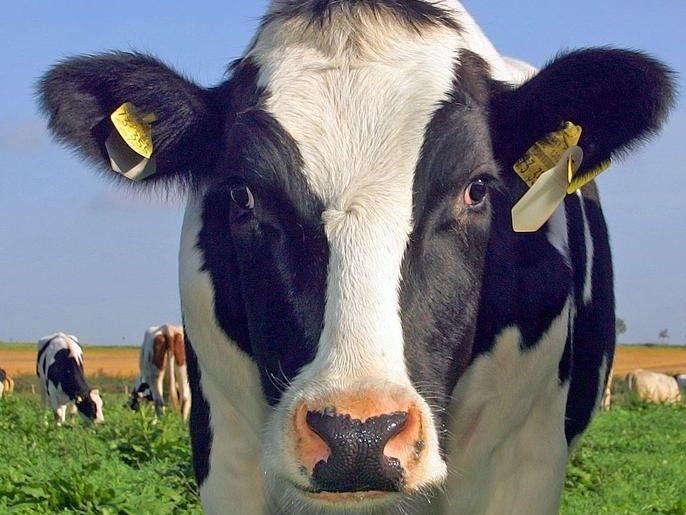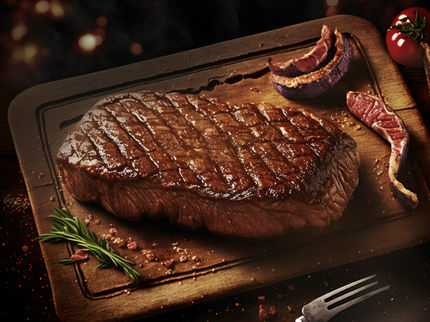The cows and the climate - historical data reveal surprising things
Since 2003, farm animals in Germany have emitted less methane than in 1892
Advertisement
Two scientists from the Research Institute for Farm Animal Biology Dummerstorf (FBN) have compared methane emissions from farm animals at the end of the 19th century with today's values. The result was surprising: since 2003, methane emissions have been lower than in 1892. The results of the study were published in the journal "Science of The Total Environment "*.

Are cows unfairly labeled as climate killers? Researchers at FBN have found that climate targets for methane can be met with efficient farming.
FBN
As a greenhouse gas, methane is partly responsible for global warming. A large part of the emissions are caused by humans, with agriculture and especially livestock farming accounting for a significant share. In its climate protection law, Germany is pursuing the goal of achieving greenhouse gas neutrality by 2045. To achieve this, emissions from all sectors must be reduced by 65 percent by 2030 compared with 1990 levels. Accordingly, methane emissions generated in the course of digestion by farm animals would have to be reduced to 853,000 metric tons by 2030 (2020: 927,000 metric tons).
Methane emissions from farm animals yesterday and today
While today we know the current methane emissions from livestock quite well, we know relatively little about situation in the 19th century, where the onset of global warming is already detectable. Dr. Björn Kuhla and Dr. Gunther Viereck from the FBN took this as an opportunity to see if it is possible to make a data-based statement about methane emissions from livestock in the German Empire and make them comparable with today's values.
"We analyzed data from the Germany-wide livestock censuses of 1872, 1883 and 1892. From the body weights, we were able to calculate feed intake. In other sources, we found data on feeding and meat and milk production in the 19th century. With this information, it was possible to calculate methane emissions using standardized estimating equations. Territorial changes since the founding of the German Empire in 1871 were also taken into account," Kuhla explained. "In doing so, we were surprised to find that methane emissions from the digestion of livestock in Germany have been lower since 2003 than in 1892. Our study shows that the climate targets set by the German government for the livestock sector are within reach."
Annual methane emissions from livestock were 898,000 tons in 1883 and a full 1,060,000 tons in 1892. The emissions target of 853,000 metric tons for 2030 is thus 207,000 metric tons below the 1892 emissions level. Since 2003, livestock in Germany have actually been emitting less methane than in 1892. From 1990 to 2021, methane emissions from the digestion of livestock decreased by 390,000 metric tons to 930,000 metric tons.
The two researchers see one reason for this in the sharp decline in animal numbers among cattle, sheep and goats. Although the population on the present-day territory of Germany has grown significantly over the past 130 years to 84 million, with about 34 million people at that time, their supply could be ensured with a lower number of animals thanks to the higher performance of the animals and a high efficiency in animal husbandry, which was accompanied by a decrease in methane emissions.
In 1892, for example, a total of 12.45 million "cows and other bovine animals," 8.93 million sheep, 2.53 million goats, and 2.33 million horses were statistically recorded. Germany currently has 11 million cattle, 1.5 million sheep, 140,000 goats and 1.3 million horses (source: bmel-statistik.de and AWA analysis).
How can the emission targets be achieved in Germany?
The researchers at the FBN see possible solutions for a further successful reduction of methane emissions primarily in pig farming. Although pigs produce relatively little methane, on the other hand, every fifth pig in Germany is not needed to feed the population. Reducing herds by 20 percent would save 5,000 tons of methane per year. In addition, there would be savings of several thousand tons of carbon dioxide - also a harmful greenhouse gas - associated with the import of soy feed. Since soy is also suitable for human consumption, reduced use as feed would reduce competition between the trough and the plate.
There are also opportunities to reduce methane emissions from cattle. Germany's milk self-sufficiency rate is 112 percent. Reducing herds would not jeopardize food security or challenge dietary habits. Feeding regionally available biomass that is not suitable for human consumption would also reduce emissions by eliminating feed imports without competing with humans for food.
And the international perspective?
"We are seeing large increases in populations in Africa, Asia and South America, and parallel increases in livestock populations and their methane emissions," Kuhla said. "At the same time, cows, sheep and goats in these regions have the lowest efficiency in producing food. Improving efficiency would also reduce animal numbers and emissions in these regions and ensure a regional supply of food of animal origin."
Note: This article has been translated using a computer system without human intervention. LUMITOS offers these automatic translations to present a wider range of current news. Since this article has been translated with automatic translation, it is possible that it contains errors in vocabulary, syntax or grammar. The original article in German can be found here.
Original publication
Science of The Total Environment B. Kuhla, G. Viereck (2022) Enteric methane emission factors, total emissions and intensities from Germany's livestock in the late 19th century: A comparison with the today's emission rates and intensities, Science of The Total Environment 848, 157754, https://doi.org/10.1016/j.scitotenv.2022.157754




























































